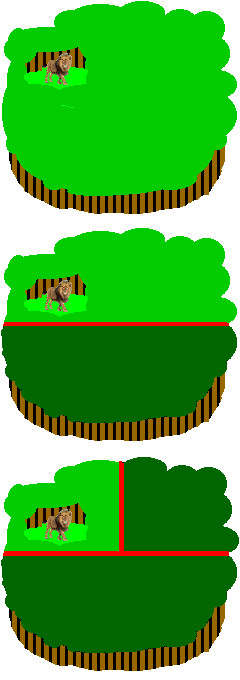Also, at any time you can select the text in the panel, copy it, then paste it into a notepad app and save it (which is probably a good idea anyway: "Save early, save often")]

The scientific way to do this is what I call "Lion* Hunting." You imagine yourself a big game hunter, and you are coming to this forest, and you want to catch the lion in it. So you divide the forest in half. The lion is either on the north side of the line, or on the south. Then you take that half and divide it in half again, so the lion is either on the east side or the west. If your first question is
"Is your number less than 50?"then no matter how they answer, yes or no, you already have half as many numbers to search. Do you see how that works?
So, what question do you want to ask each time around? Can you think of a way to ask it, so it's (mostly) the same question each time through? If you tried and still can't figure out how, don't worry about it, I didn't think it up myself either. 20 million programmers didn't invent it, every one of us got it from somebody else, except some mathematician 60 or 70 years ago figured it out. The rest of us all heard (or read) about it and copied the idea.
When you are ready, turn the page.
Five Basic Concepts Sequence Iteration Conditional Variables Input/Output
<<Previous | ToC | Next >>
[2021 June 8]
*Lion The name is a pun on the idea of hunting by drawing lines (sounds like "lions") across the data to divide it in half.